Technology

5 min
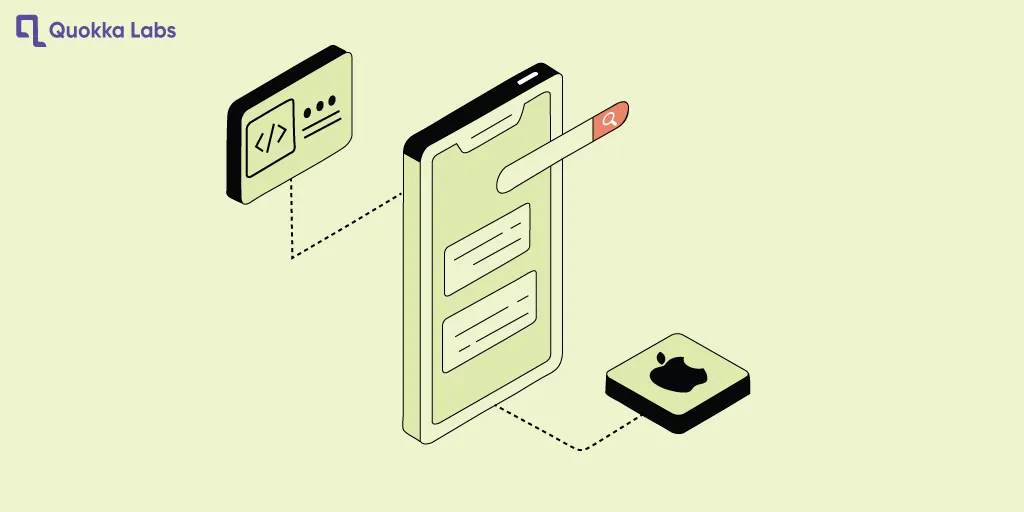
Explore the top 10 iOS app development best practices for building high-performance, user-friendly apps. Learn from expert iOS developer tips and tricks. Follow these key considerations for iOS app success.

By Dhruv Joshi
19 Sep, 2023
When it comes to iOS App Development best practices, following the best among them is crucial for ensuring the success and quality of your applications. With the ever-evolving iOS ecosystem, staying up to date with the latest ios app trends, technologies, and techniques is essential.
In this blog post, we will discover the top 10 iOS development best practices that will help you build high-performance, user-friendly, and scalable applications, including iOS developer tips and tricks.
Whether you are a seasoned iOS developer or just starting out, these key considerations and these iOS app development cost will empower you to create exceptional iOS apps that stand out from the crowd.
Explore More- How to Hire Dedicated iOS Developer in 2025
Let's dive in without wasting time.
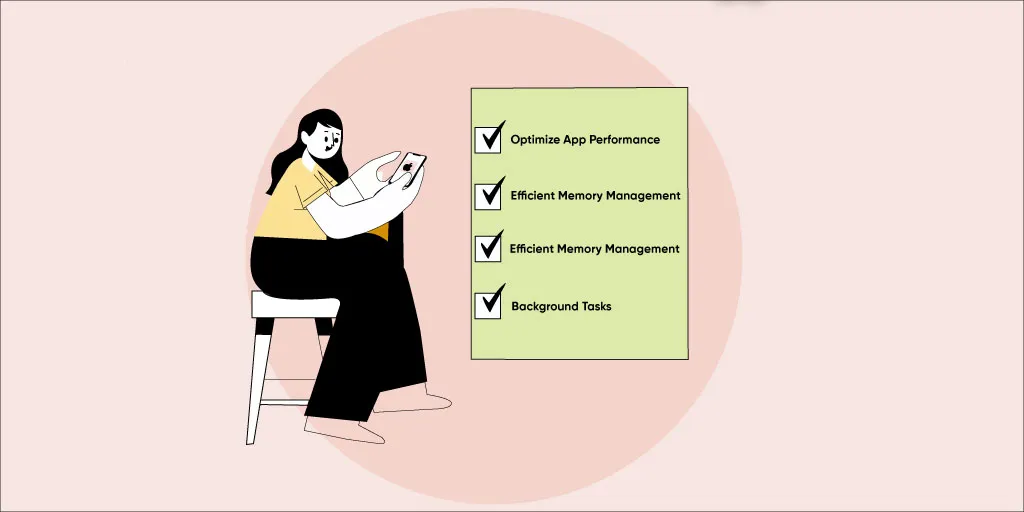
The iOS human interface guidelines are a set of principles and recommendations provided by Apple to make sure a consistent and intuitive user experience across all iOS devices. By adhering to these guidelines and iOS App Development Best Practices, you can create visually appealing and user-friendly apps. Pay attention to aspects such as layout, typography, color schemes, and navigation patterns to deliver a seamless experience for your users.
Performance optimization is crucial in iOS development best practices to provide a smooth and responsive experience to users. Here are a few tips to enhance app performance:
Use Automatic Reference Counting (ARC) to manage memory efficiently and avoid memory leaks. Profile your app using Xcode's Instruments to identify and fix any memory-related issues.
Utilizing background tasks effectively is also an iOS Development Best Practices to ensure your app performs well even when not in the foreground. Implement multitasking features such as background fetching, push notifications, and background audio to enhance user experience. It's one of the good iOS App Development Best Practices to follow.
Load data and resources on-demand to minimize initial launch time and memory usage. Consider using lazy loading techniques for images, videos, and other heavy assets in your iOS Development Best Practices.
Let's move forward to the following key consideration.
Swift, we all know, especially iOS developers, is the modern programming language for iOS app development, replacing Objective-C. Embracing Swift allows you to leverage its powerful features, like type safety, memory management, and improved performance. Stay updated with the latest Swift versions and take advantage of new language features and improvements.
Also, follow iOS Development best practices, regularly watch for Apple's Swift updates, and participate in the Swift community to keep yourself updated.
Now, let's proceed to the next important aspect.
If you are in hurry and want faster solutions, you can hire dedicated iOS app developers right away from us!
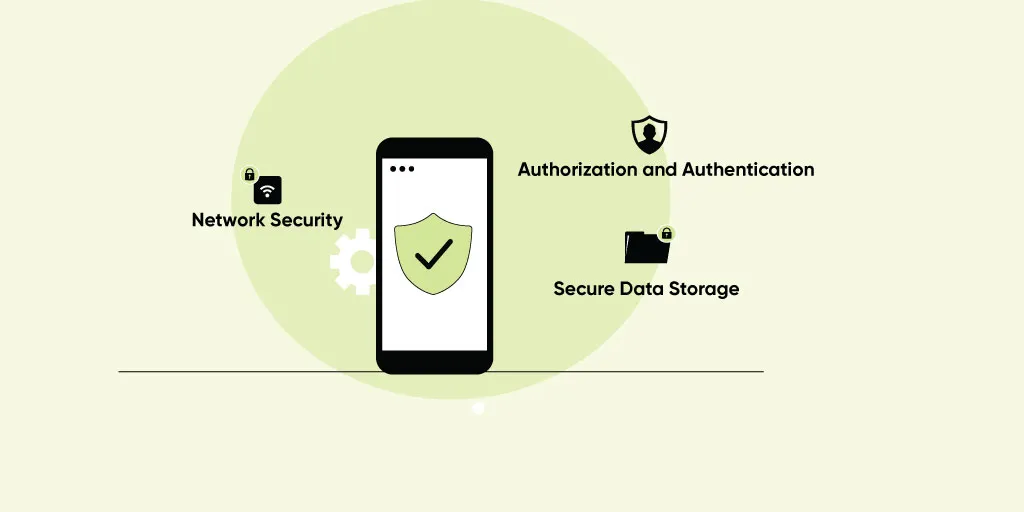 Next, App security is one of the best iOS App Development Best Practices. It is of utmost importance to protect user data and maintain user trust. Consider the following security measures:
Next, App security is one of the best iOS App Development Best Practices. It is of utmost importance to protect user data and maintain user trust. Consider the following security measures:
Safely store sensitive user data using encryption techniques such as Data Protection API, Keychain Services, and the greatest iOS Development Best Practices.
Implement secure communication protocols (e.g., HTTPS) to ensure data integrity and confidentiality during network requests. Validate and sanitize user input to save it from common security vulnerabilities like SQL injection and cross-site scripting.
Implement robust authentication mechanisms and access controls to protect user accounts and prevent unauthorized access.
Let's now shift our focus to the next crucial factor.
 Thorough testing is crucial and also comes under iOS Development Best Practices for app success. Here are some testing best practices:
Thorough testing is crucial and also comes under iOS Development Best Practices for app success. Here are some testing best practices:
Write unit tests to validate the behavior of individual components and ensure code reliability. Utilize the XCTest framework provided by Apple for seamless unit testing integration. All these tests are iOS App Development Best Practices.
Automate user interface testing to ensure consistent behavior across various devices and scenarios. Xcode's built-in XCTest framework provides UI testing capabilities.
Involve beta testers to gather valuable feedback and identify potential issues. It's a necessary procedure under iOS Development Best Practices. Platforms like TestFlight can help streamline the beta testing process. These tests are a good sign of the iOS App Development services. If you are getting in touch with one, keep in mind.
Now, let's turn our attention to the following essential aspect.
Continuous Integration and Delivery (CI/CD) practices help streamline the development process and ensure the quality of your app. Consider integrating a CI/CD pipeline using tools like Jenkins, Fastlane, or Xcode Server. Automate tasks such as building, testing, and deploying your app to improve productivity and reduce human error. Don't forget to follow this in your iOS Development Best Practices checklist.
Moving on to the next crucial factor, let's delve into the following key consideration.
It's among the greatest iOS App Development Best Practices. In iOS app development, handling time-consuming tasks such as network requests, file operations, or database queries asynchronously is crucial.
By using asynchronous programming techniques, you can prevent your app from becoming unresponsive and provide a smooth user experience. Here are a few approaches to consider:
It's another one of the crucial iOS Development Best Practices. GCD is a powerful API provided by Apple for managing concurrent and asynchronous tasks. Utilize dispatch queues to offload heavy operations to background threads while keeping the main thread responsive for UI updates. Use GCD's DispatchWorkItem to encapsulate tasks and control their execution.
NSOperationQueue is another option for managing concurrent tasks in iOS. It allows you to create operation objects that encapsulate units of work. With this, one of the crucial iOS Development Best Practices, you can set dependencies between operations, prioritize tasks, and control the execution of operations.
Let's examine the next significant factor without wasting any more time.
The best and most responsive UI design also comes under iOS App Development Best Practices. Creating a responsive user interface is essential for a seamless and enjoyable user experience. Consider the following tips to design a responsive UI:
Also read : The Ultimate Guide to Intuitive UI Design for iOS Apps
Utilize Auto Layout to define flexible and adaptive user interfaces that can adjust to different screen sizes and orientations and comes under the most followed iOS Development Best Practices. Use constraints to determine the relationships between UI elements and let the system handle the layout adjustments.
Size classes enable you to design adaptive layouts that adapt to different device sizes. Use size classes to describe distinct layouts for compact and regular width and height environments. This way, your app can provide a consistent experience across various iOS devices.
Supporting Dynamic Type is one of the iOS Development Best Practices. It allows users to adjust the text size based on their preferences. By incorporating this feature into your app, you ensure it accommodates users with different visual needs. To make the most of Dynamic Type, you should utilize appropriate font scaling techniques that maintain the legibility and visual appeal of your app's user interface across various text sizes.
Read More: How to Optimize iOS Apps for Different Screen Sizes and Resolutions?

Battery life is a critical aspect for mobile users and is an indirect business success. The iOS app should use the lowest amount of battery possible. Implementing strategies to optimize battery usage in your iOS app can significantly enhance the user experience. Consider the following tips:
When developing an iOS app, it's crucial to adhere to iOS App Development Best Practices. One such practice is to avoid unnecessary background activity that can drain the device's battery. It's essential to be mindful of your app's background tasks' impact on power consumption.
To optimize battery usage, consider pausing or minimizing non-essential background tasks and only perform critical operations once the app is not idle/on standby. Adopting this approach ensures that your app is efficient and respectful of the user's device resources.
Optimize network requests by reducing the frequency of updates and using techniques like batching or delta updates. Implement smart caching mechanisms to minimize network usage and improve app performance.
Optimizing CPU and GPU usage is essential to iOS App Development Best Practices. Minimizing unnecessary resource consumption can enhance your app's overall performance and efficiency. Employing optimization techniques for animations, graphics rendering, and image processing is crucial.
For example, you can utilize image caching to store and retrieve frequently used images, implement lazy loading to load content as needed and offload heavy computations to background queues. Incorporating these strategies ensures your app operates smoothly while efficiently using system resources.
Now, let's shift gears and focus on the following essential considerations.
Ensuring accessibility support is essential to make it usable for users with disabilities in developing an iOS app.
Here are some tips to enhance accessibility:
Ensuring compatibility with VoiceOver is a crucial aspect of iOS App Development Best Practices. VoiceOver is a built-in screen reader that aids users with visual impairments in navigating and interacting with your app.
To make your app fully accessible, it's important to provide descriptive labels for UI elements, enabling accessibility traits that accurately convey their purpose or behavior. Additionally, implementing appropriate accessibility notifications allows VoiceOver to provide users with crucial information about the current state of your app.
Following these guidelines creates a more inclusive and user-friendly experience for individuals who rely on VoiceOver.
As mentioned, support Dynamic Type allows users to adjust the text size. Test your app with different text sizes to ensure all UI elements remain accessible and readable.
Confirm sufficient color contrast among text and background elements to assist visually impaired users. Use tools like the Accessibility Inspector in Xcode to verify color contrast ratios.
Now, let's explore the next significant factor on our list.
Modularizing your codebase is essential for IOS App Development Best Practices for maintaining code readability, reusability, and maintainability. Here's why and how to do it:
Divide your app's functionality into modules, each responsible for specific tasks. It improves code organization and makes it easier to understand and maintain.
Encapsulate related code within modules, creating clear boundaries and reducing dependencies between different parts of your app. It promotes code modularity and reusability.
Use dependency management tools like CocoaPods or Swift Package Manager to handle external dependencies efficiently. It allows you to integrate third-party libraries and frameworks into your project quickly.
Create reusable frameworks or modules within your app that encapsulate standard functionalities. This way, you can share code across multiple projects or even with other developers, reducing development time and effort.
Well, there is a sea of best practices for iOS app development, and we covered the most critical ones. Other best iOS development tips are listed below:
Handling Memory Management
Implement Core Data Effectively
Localization and Internationalization
And more!
Read blog: A Step-by-Step Guide to iOS App Development
Congratulations! You have now discovered the top iOS app development best practices. By implementing these tips, you can create outstanding applications that exceed user expectations.
But, but, but...
The journey doesn't stop here. I have tried to share most of the critical best practices, but there is a sea of them! These best practices can vary from project to project. It would be best to have an excellent and experienced iOS developer to conquer problems in tough times.
In that case, for iOS app development, you can reach out to us at Quokka Labs or reach out to the best platforms for hiring Apple developers. Whether you want to boost your iOS project to the next level or have a fantastic idea to solve user problems and provide them with the best experience, our iOS app development services are here to shape your idea's future and achieve digital success.
Happy coding & thanks for reading! Please share this blog with the needed ones who need help!
Aspects to focus on while deciding iOS app development company:
Experience in iOS app development and a strong portfolio of successful apps
Expertise in the latest iOS technologies, frameworks, and guidelines
The best way to develop iOS apps is to use Apple's official development tools, such as Xcode and Swift, and follow their recommended design and development practices.
The best programming language for iOS development is Swift, which is developed by Apple and offers a modern and powerful language for building iOS apps.
iOS apps can be profitable, especially if they offer unique features or solve specific problems. However, success depends on various factors, such as market demand, monetization strategy, and effective marketing.
iOS app developers are in high demand due to the popularity of iOS devices and the growing app ecosystem. Skilled iOS developers are sought after by companies looking to create high-quality and engaging apps for Apple's platform.
Expert iOS developer tips and tricks often include prioritizing app security, optimizing performance, adhering to Apple's Human Interface Guidelines, and thoroughly testing your app. Implementing these iOS app best practices ensures a smooth user experience and a higher chance of App Store approval.
To differentiate your app, focus on innovative features, a user-friendly design, and exceptional performance. Following iOS app development best practices like implementing smooth animations, responsive UI, and intuitive navigation can significantly enhance user engagement and retention.
Swift is Apple's preferred language for iOS app development. It offers modern features, enhanced safety, and better performance compared to Objective-C. Expert iOS developers recommend staying updated with the latest Swift versions to leverage its full potential.
Security is paramount in iOS app best practices. Implement data encryption, secure network communication (HTTPS), and robust authentication mechanisms to protect user data. Regularly update your app to address any security vulnerabilities.
iOS app development best practices for performance optimization involve efficient memory management, reducing app launch time, optimizing image assets, and minimizing network requests. Employing these expert iOS developer tips can lead to a faster and more responsive app.
Adhering to iOS app development best practices is crucial for App Store approval. Ensure your app follows Apple's guidelines, doesn't contain any prohibited content, and provides a seamless user experience. Thorough testing and addressing any bugs or crashes are also essential steps in the approval process.
A successful iOS app requires a combination of factors. Start with market research to find your target audience and their needs. Follow expert iOS developer tips on creating a user-friendly design, optimizing performance, and ensuring security. Effective marketing and promotion, along with ongoing updates and user feedback integration, are crucial for long-term success.
Choosing Best Tech Stack for Web App Development: Performance, Cost, and Scalability
By Dhruv Joshi
5 min read
Top 9 Tech Stacks for Scalable Web Application Development
By Dhruv Joshi
5 min read
Generative AI Implementation Strategy: From Concept to Deployment (Step-by-Step Guide)
By Sannidhya Sharma
5 min read
How to Design a Web App: From Wireframes to Working Prototype
By Dhruv Joshi
5 min read

Technology

7 min
Generative AI is moving fast into enterprises, from banks to hospitals to government agencies. Adoption is rapid, but security planning lags. Unlike traditional systems, these models can be exploited through prompt injection, poisoned data, or manipulated to leak sensitive information. They are also misused for phishing, deepfakes, and malicious code.

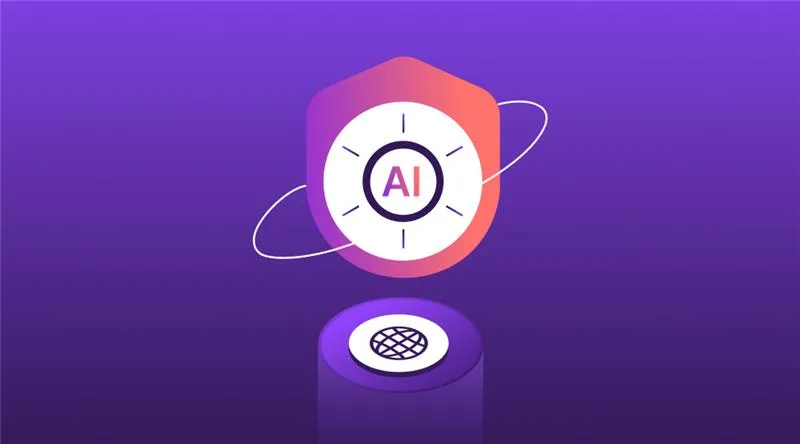
Technology

7 min
AI-powered Web Application Firewalls (WAFs) go beyond static rules by using machine learning, anomaly detection, and predictive analysis to block zero-day threats, reduce false positives, and protect APIs at scale. Unlike traditional WAFs, they self-learn, adapt in real time, and cut operational costs while improving compliance and trust.

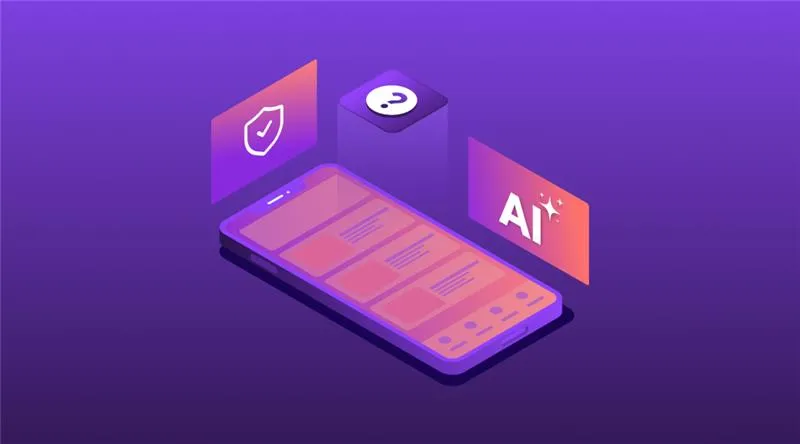
Technology

5 min
AI is redefining mobile app security by transforming how threats are detected, tested, and prevented. From continuous monitoring and fraud detection to compliance with regulations, AI ensures apps remain resilient against modern risks. This means safer apps, protected users, and stronger businesses. Investing in AI-driven security today builds trust, drives growth, and secures long-term competitive advantage.


Feeling lost!! Book a slot and get answers to all your industry-relevant doubts